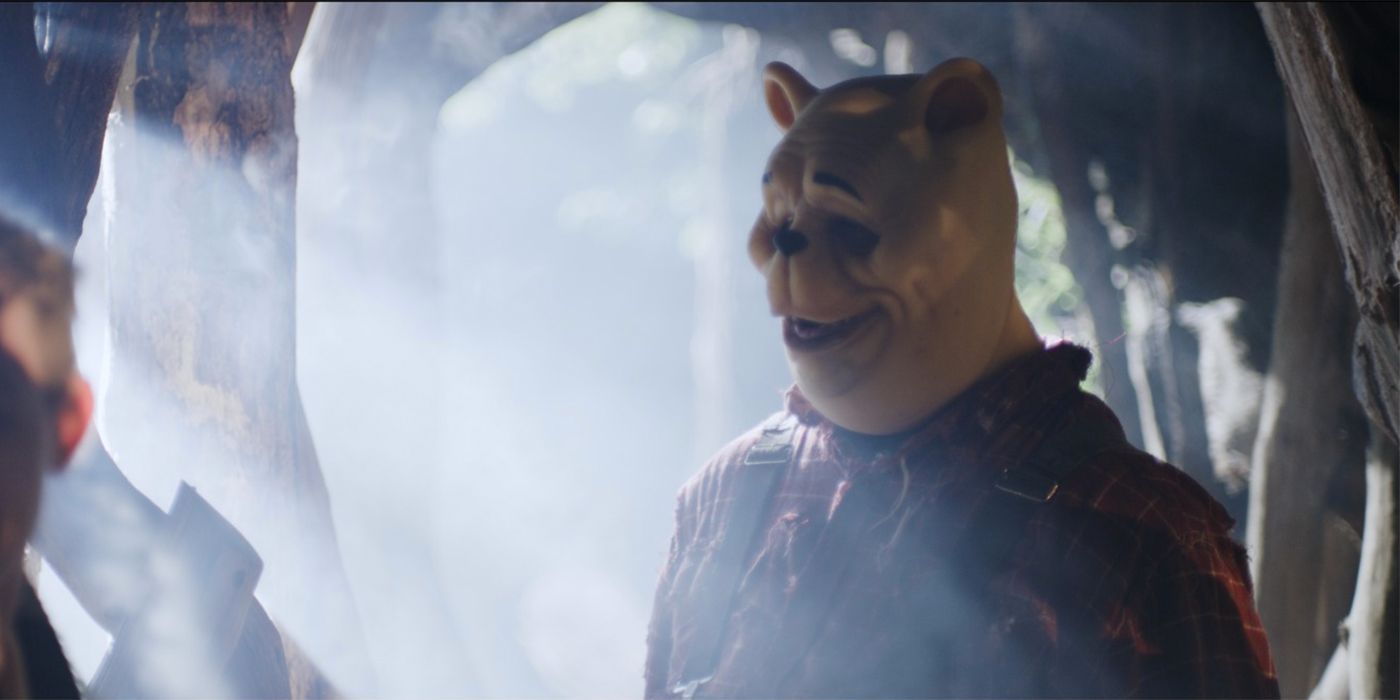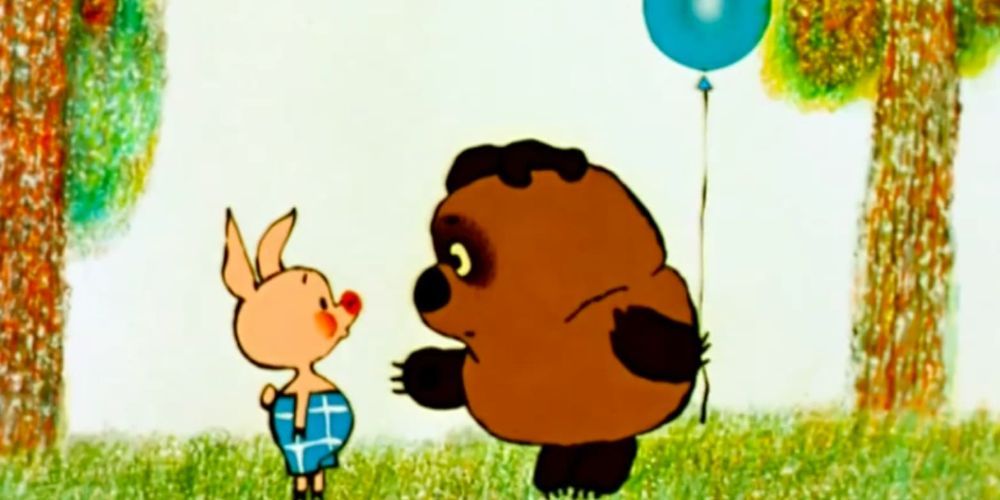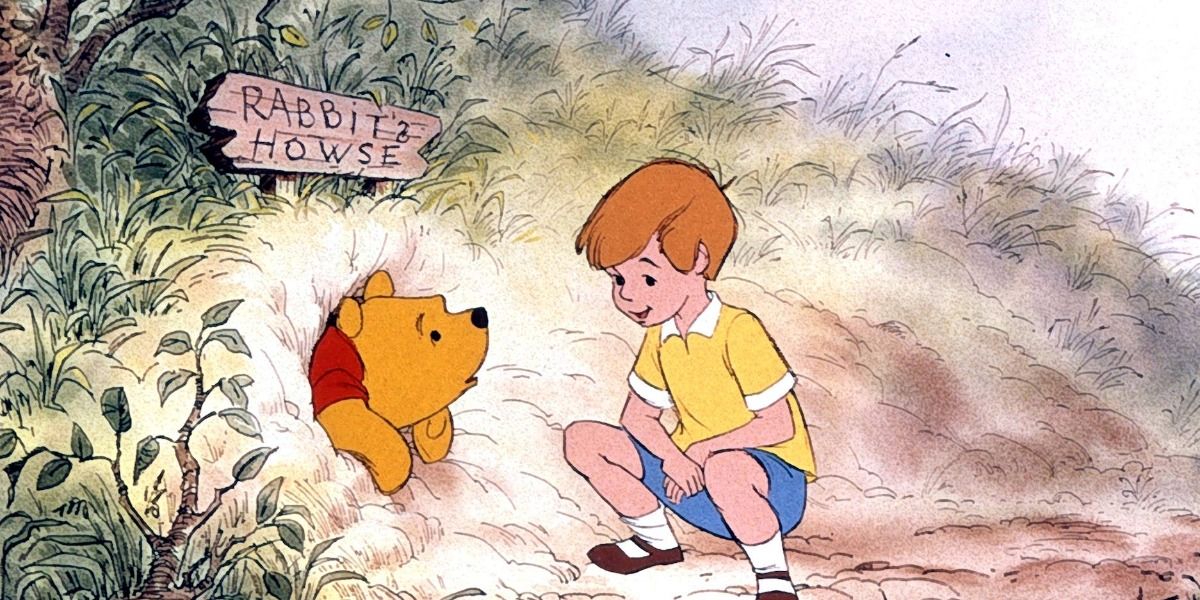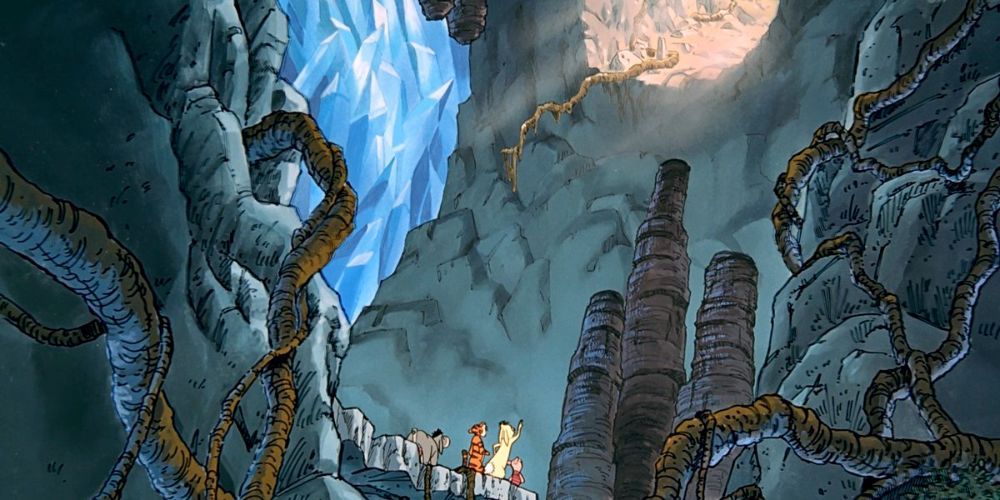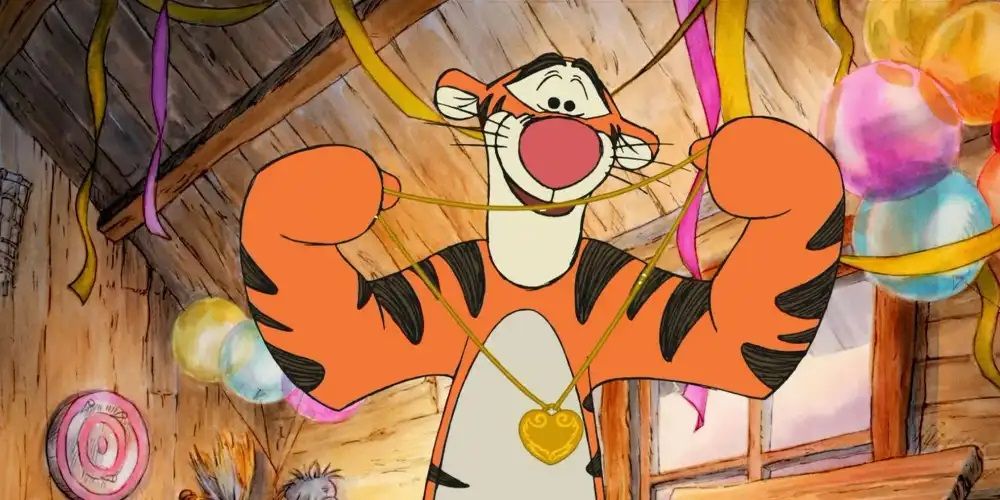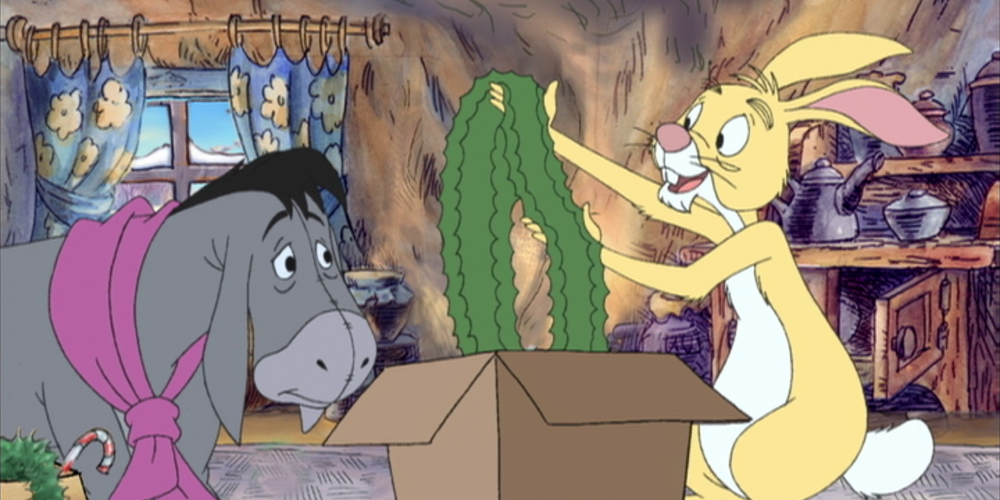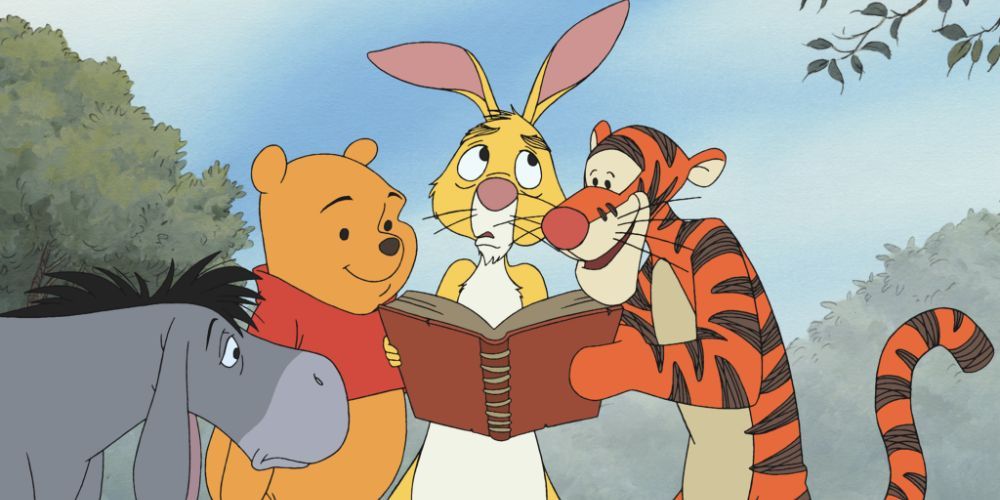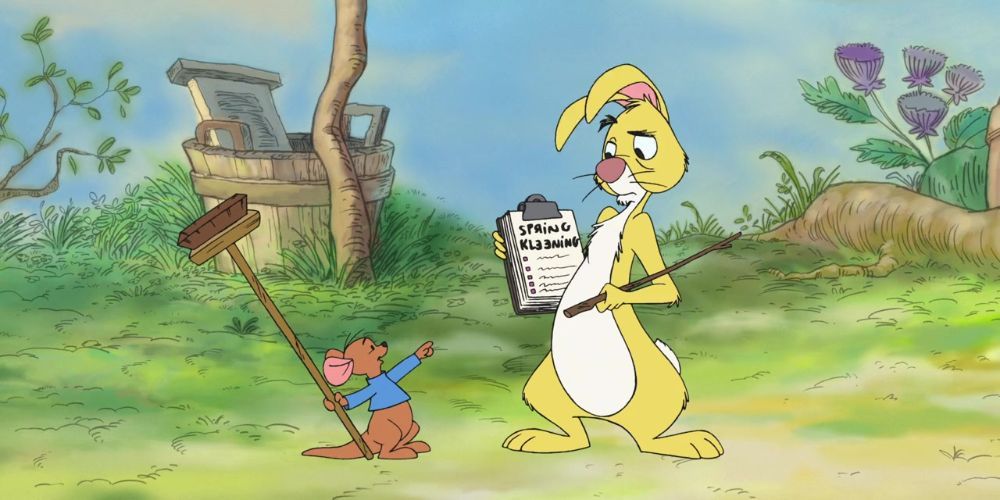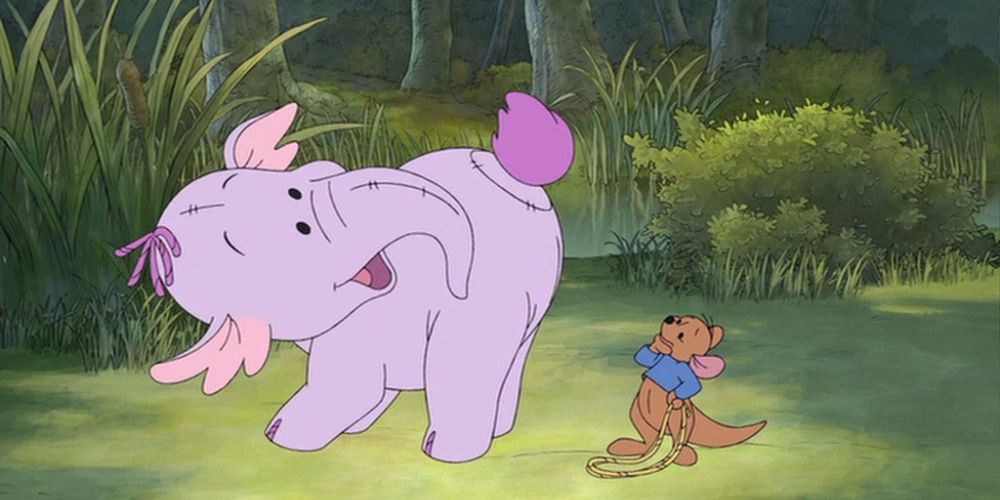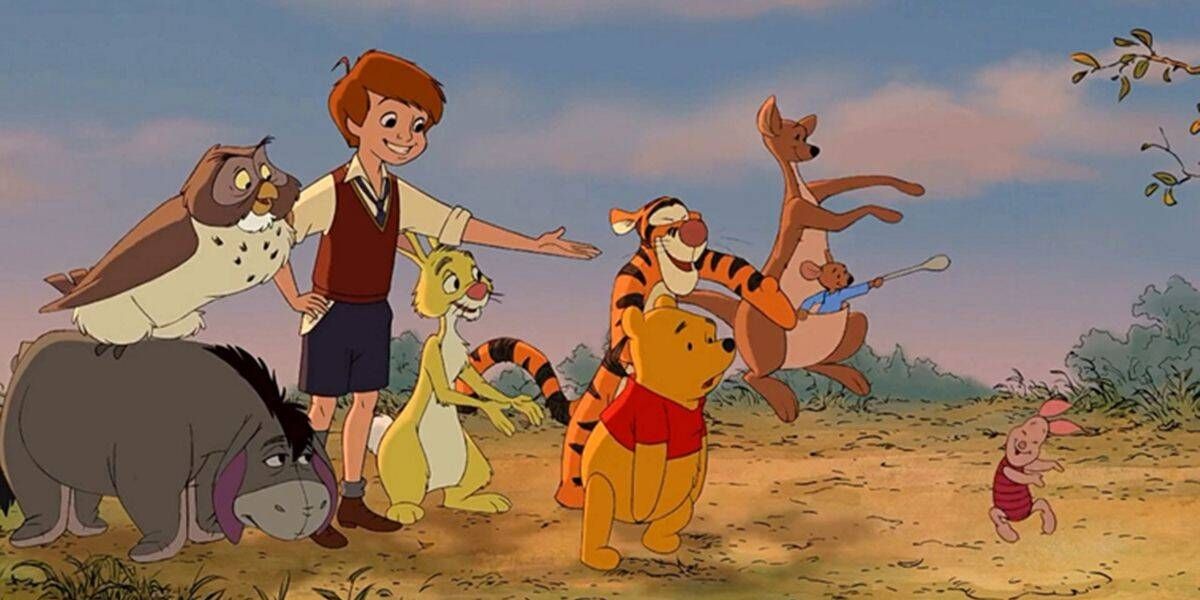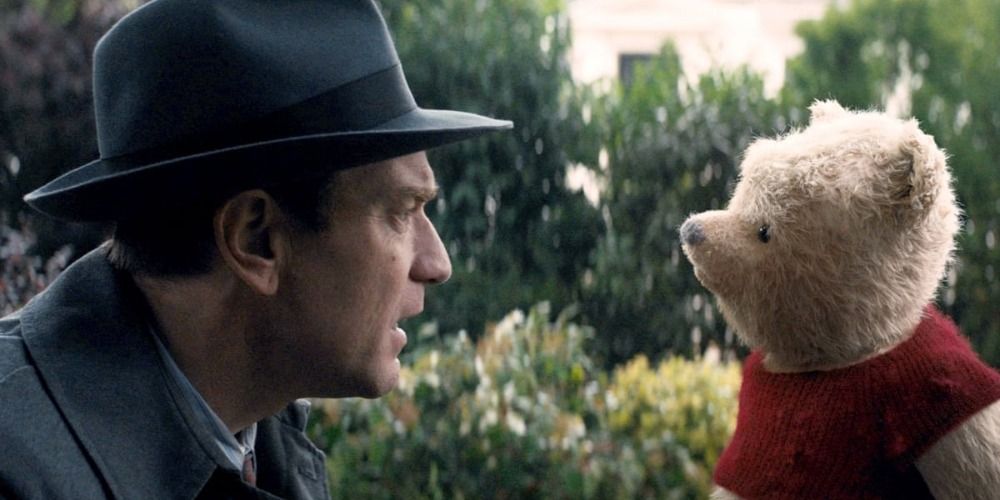Written by British author A. A. Milne in 1926, Winnie the Pooh has become a timeless story of childhood innocence. It tells the story of Christopher Robin, based on Milne's own son, and the adventures he has in the Hundred Acre Woods with his stuffed animals. The chiefest among them is Winnie the Pooh, a bear of very little brains with an insatiable love for honey.
Now that the rights for Winnie the Pooh have gone into the public domain, a dark-comedy film titled Blood and Honey is in production. Before the film releases, now is as good a time as any to return to a simpler time through the adaptations of Milne's story, mostly by Disney.
The Soyuzmultfilm Featurettes Trilogy
Between 1969 and 1972, Russian animator Fyodor Khiturk made three Winnie the Pooh short films independent of Disney. Drawn to resemble a child's crayon drawing, they adapt chapters one, two, and four from Milne's original Winnie the Pooh book. However, Christopher Robin is absent, as Khiturk thought a human character would cause a power imbalance with the animals.
These shorts have lots of charm that helps them stand against the Disney version. Some changes are made to the characters, such as Rabbit's increased politeness and making Owl a busybody woman. The lack of other side characters, like Tigger, Kanga, and Roo, can be a little upsetting, but since all three shorts can be watched in forty minutes, the limited characters are warranted.
The Many Adventures of Winnie the Pooh (1977)
After Walt's death, Disney combined Winnie the Pooh and the Honey Tree, Winnie the Pooh and the Blustery Day, and Winnie the Pooh and Tigger Too, into one feature. With new animation to tie the shorts together, Sebastian Cabot narrates the adventures of Pooh and his friends. These include looking for honey, surviving deadly weather, and proving what it means to be a good friend.
This movie makes interesting use of fourth-wall breaks, which helps it stand out among other lighthearted children's stories. Many times the characters talk with the narrator, dodge letters as they are blown about in the wind, or even threaten to jump right out of the book. The character of Gopher is a layered fourth wall joke: he claims to not be in the book, both as an independent contractor, and because he is an original character made for American audiences.
Pooh's Grand Adventure: The Search for Christopher Robin (1997)
On the first day of autumn, Pooh is sad to find that Christopher Robbin is missing. After getting Owl to translate a note left on a honeypot, they conclude that Christopher has been taken to a place called Skull. With nothing but a hand-drawn map, Pooh, Piglet, Tigger, Rabbit, and Eeyore, must venture into the great unknown to find their friend and maybe discover their worth along the way.
This was Pooh's first home-video film, and it's a wonderful way to begin. The story is surprisingly mature, pushing the characters to discover their strengths while teaching kids that just because somebody is gone doesn't mean they're not still with you. It's also a good adventure movie, with plenty of detailed locations for the characters to explore that add size to the Hundred-Acre Woods.
The Tigger Movie (2000)
As autumn turns into winter, everybody is busy making their preparations, which means they can't go bouncing with Tigger. To cheer him up, Roo suggests that Tigger look into his family. After a misunderstanding with Owl about a family tree, Tigger is convinced that his family is waiting for him somewhere in the woods.
The Tigger Movie showed that a Pooh story could be told without Pooh as the main character. Tigger's drive to find a family, and Roo's determination to help him, make for a very touching story about what exactly makes a family. It is complemented by some beautiful animation that mirrors the appearance of a sketchbook, and a new batch of lovable songs from the legendary Sherman Brothers.
A Very Merry Pooh Year (2001)
This straight-to-DVD sequel is divided into two halves. The first is on Christmas Eve, where Pooh and friends exchange gifts and re-tell the 1991 special Winnie the Pooh and Christmas Too for Roo. Then, on New Year's Eve, Pooh, Piglet, Tigger, and Eeyore make New Year's resolutions to be different people after annoying Rabbit so that he won't move away.
While the second half has its moments, such as when the group begins to act like one another while trying to be the opposite of themselves, it pales in quality to the 91 special. Seeing Pooh go to such great lengths to ensure his friends all have the best Christmas is touching, and it's no wonder the short was nominated for an Emmy Award for outstanding children's program. To date, this film is the only way to watch the special, so it's worth checking out for that.
Piglet's Big Movie (2003)
Piglet is feeling sad when he's told that he is too small to help his friend with their latest plan to steal honey from bees. Predictably, it goes wrong, and in the confusion, the others think that Piglet has gone missing. They decide to use his scrapbook as a guide to finding him, and while looking through its pages, come to realize just how important Piglet is to their community.
Piglets' Big Movie has some funny and heartwarming moments, especially as they go through the different stories in the scrapbook. Many of them were adapted from unused chapters of Milne's book, so they have the same charming appeal as The Many Adventures of Winnie the Pooh. The songs aren't as good, but they are catchy and performed by Carly Simon.
Springtime With Roo (2004)
Pooh and the gang are excited to celebrate Easter with Rabbit, who always throws the best parties. However, this year Rabbit wants nothing to do with Easter and would rather have everyone do spring-cleaning. As Roo tries to think of a way to cheer Rabbit up, narrator David Ogden-Stier takes Rabbit through the book's chapters to help him change his ways.
The story's structure mirrors Charles Dickens's A Christmas Carol, with the book being used to take Rabbit back and forward in time. The Narrator serves as a single ghost to guide Rabbit, and it ends up being the strongest part of the story. Ogden-Stier's voice is a great blend of British class and wit, which leads to among the most enjoyable interactions between the narrator and characters in the series.
Pooh's Heffalump Movie (2005)
When a trumpeting sound echoes through the woods, Pooh and friends know that a Heffalump is afoot. As Rabbit prepares an expedition, Roo finds a young one named Lumpy. He convinces Lumpy to come back with him and discovers that maybe the group's perspectives on Heffalumps are wrong.
Stories about learning that the monsters are misunderstood are not new, but this one works for kids by showing both sides. Lumpy has heard stories about Roo and his friends and fears them as much as they fear him. This film also marks the first time a Heffalump has physically appeared in a Pooh movie that wasn't a dream sequence.
Winnie the Pooh (2011)
Returning to the formula of the 1977 movie, Winnie the Pooh sees several troubles befall the woods. First, Eeyore loses his tail again, and everyone has a context to find a replacement. Then Christopher Robin goes missing, and Owl concludes that he has been taken by a monster called the Backson.
The return to formula with this movie was much welcomed. Though the plot sounds familiar if you've seen all the other Pooh movies, it's still executed well and has a gorgeous art style made up by Disney's top animators. Unfortunately, the movie didn't make as much money as Disney hoped, and they haven't released another traditionally animated film since.
Christopher Robin (2018)
Ewan McGregor stars as an adult Christopher Robin, who lives with a family in London. Due to some restructuring at his job, Christopher has to stay home while his family goes to their cottage in Sussex. However, things become complicated when Pooh arrives in London to ask Christopher to help find their friends.
It was always inevitable that Christopher Robin would grow up and leave his friends behind, mirroring how audiences who grew up with Winnie the Pooh in their childhoods are now adults. However, just because you grow up doesn't mean you still can't be a child at heart. McGregor and Jim Cummings sell this theme with their performances, which capture the range of confusion, frustration, and joy one would expect from such a situation.

